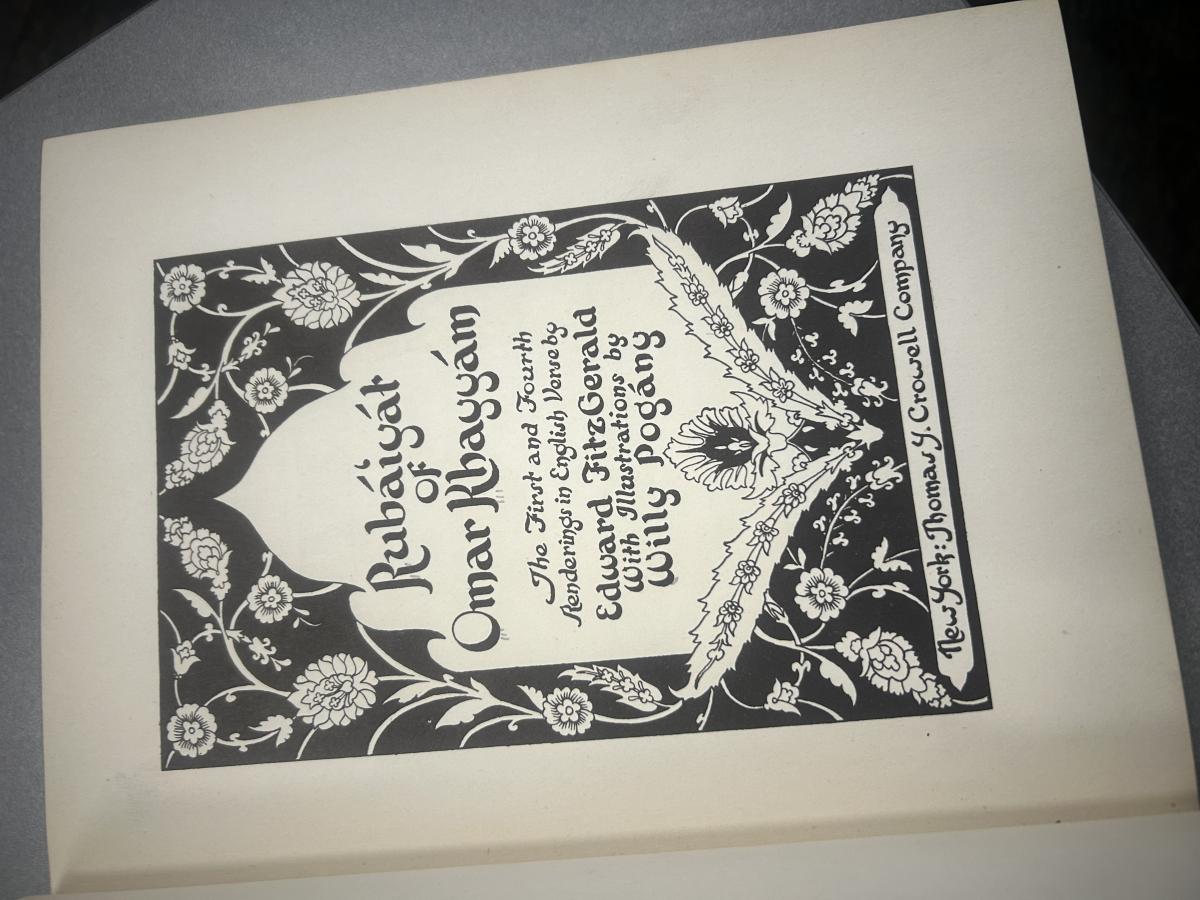Created by Olyvia Neal on Fri, 04/25/2025 - 19:52
Description:
My edition was published in approximately 1935, by the now-defunct Thomas Y Crowell Company in New York. Like most editions, it is titled as Rubáiyát of Omar Khayyám, written in a font that seems reminiscent of Arabic lettering, presumably for the intent of making the book seem more “authentic” and “exotic”. In total, this book is 96 pages long, and contains two separate translations of the original Rubáiyát, the first and the fourth editions of Edward Fitzgerald’s translations.
This book has both color-and-black and white illustrations, with the colored illustrations being glued or otherwise attached to the pages. All of this work is credited to Willy Pogány, a Hungarian illustrator who had a massive portfolio of artworks to show for his decades of activity as an artist. Although he primarily illustrated children’s books, he also illustrated more adult-oriented books, and even worked as an art director in Hollywood for a brief period. His style, for this book at least, appears to be primarily a mix of Art Nouveau and renaissance-inspired works, with many of the colored illustrations featuring women in either very flowy clothing or nude. It is notable, however, that most of the women in these artworks appear to be white or very pale, which can likely be attributed to the Orientalism taking place in this book and the whitewashing common among European and American admirers of art created by people of color.
What drew me to this book initially was its beautiful cover; sage green with gold-embossed text and artwork. The front cover features a vase, with leaves and flowers growing out of it in a circle, the center of which features a peacock, wings spread and posed regally. It is a fairly thin book, but wide and tall, with large text in a serif font. Every page has some form of artwork on it, whether it is beautiful women out in nature, scenes of couples, or floral framing of the pages.
The artwork, in my opinion, is the most notable aspect of this book. There is a lot of it, in a consistent, elegant style that looks as though it took rather a long time to create. There is a consistent, repeated theme throughout the book of flowers, many resembling roses, morning glories, and other vine flowers.
The pages are satisfyingly thick, almost feeling like watercolor paper, but missing the characteristic roughness of that style. Presumably, this design was intended to improve the stability of the book, and provide a safe, sturdy canvas for the paintings glued into them, although it is notable that they are attached only by a spot of glue or some other adhesive in the center of the photo, rather than gluing down the edges. Though this method seems unstable, none of these images appear to be missing, so it has evidently been a successful method of attaching them.
The photos included with this description are intended to show the cover, title page, and some of the artwork present in the book.



Source - “BIOGRAPHY: Willy Pogany | Architecturals.net.” Architecturals.net, 2025, www.architecturals.net/biography-willy-pogany/. Accessed 1 May 2025.


